Seung-Jun Kim
New Interpretable Patterns and Discriminative Features from Brain Functional Network Connectivity Using Dictionary Learning
Nov 10, 2022



Abstract:Independent component analysis (ICA) of multi-subject functional magnetic resonance imaging (fMRI) data has proven useful in providing a fully multivariate summary that can be used for multiple purposes. ICA can identify patterns that can discriminate between healthy controls (HC) and patients with various mental disorders such as schizophrenia (Sz). Temporal functional network connectivity (tFNC) obtained from ICA can effectively explain the interactions between brain networks. On the other hand, dictionary learning (DL) enables the discovery of hidden information in data using learnable basis signals through the use of sparsity. In this paper, we present a new method that leverages ICA and DL for the identification of directly interpretable patterns to discriminate between the HC and Sz groups. We use multi-subject resting-state fMRI data from $358$ subjects and form subject-specific tFNC feature vectors from ICA results. Then, we learn sparse representations of the tFNCs and introduce a new set of sparse features as well as new interpretable patterns from the learned atoms. Our experimental results show that the new representation not only leads to effective classification between HC and Sz groups using sparse features, but can also identify new interpretable patterns from the learned atoms that can help understand the complexities of mental diseases such as schizophrenia.
Radio Map Estimation: A Data-Driven Approach to Spectrum Cartography
Feb 01, 2022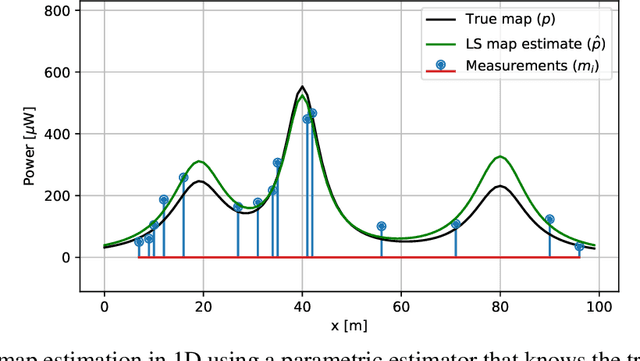



Abstract:Radio maps can be utilized to characterize a parameter of interest in a communication channel, such as the received signal strength, at every point of a certain geographical region. This article presents an introductory tutorial to radio map estimation, where radio maps are constructed using spatially distributed measurements. After describing the applications of this kind of maps, this article delves into estimation approaches. Starting by simple regression techniques, gradually more sophisticated algorithms are introduced until reaching state-of-the-art estimators. The presentation of this versatile toolkit is accompanied with toy examples to build up intuition and gain insight into the foundations of radio map estimation. As a secondary objective, this article attempts to reconcile the sometimes conflicting terminology in the literature and to connect multiple bodies of literature and sub-communities that have been working separately in this context.
Channel Gain Cartography via Mixture of Experts
Dec 08, 2020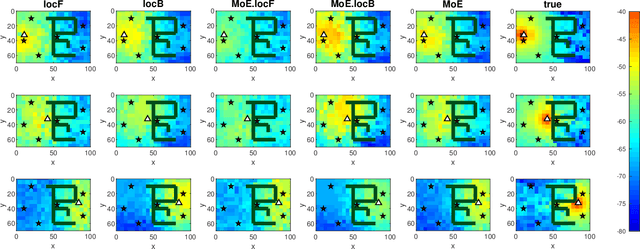
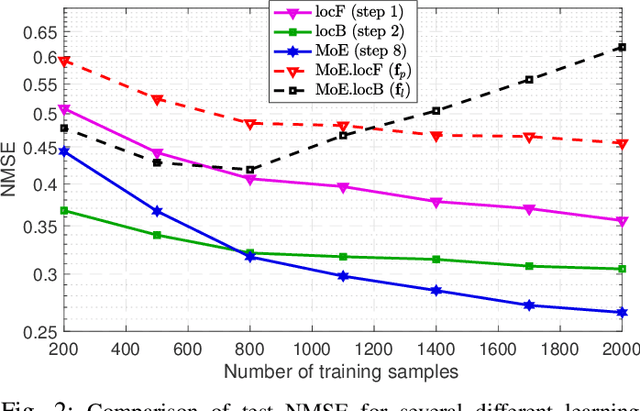
Abstract:In order to estimate the channel gain (CG) between the locations of an arbitrary transceiver pair across a geographic area of interest, CG maps can be constructed from spatially distributed sensor measurements. Most approaches to build such spectrum maps are location-based, meaning that the input variable to the estimating function is a pair of spatial locations. The performance of such maps depends critically on the ability of the sensors to determine their positions, which may be drastically impaired if the positioning pilot signals are affected by multi-path channels. An alternative location-free approach was recently proposed for spectrum power maps, where the input variable to the maps consists of features extracted from the positioning signals, instead of location estimates. The location-based and the location-free approaches have complementary merits. In this work, apart from adapting the location-free features for the CG maps, a method that can combine both approaches is proposed in a mixture-of-experts framework.
Learning Power Spectrum Maps from Quantized Power Measurements
Mar 05, 2017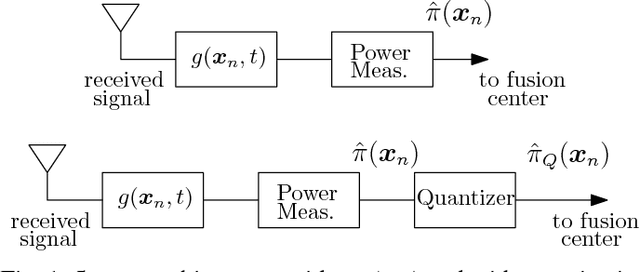

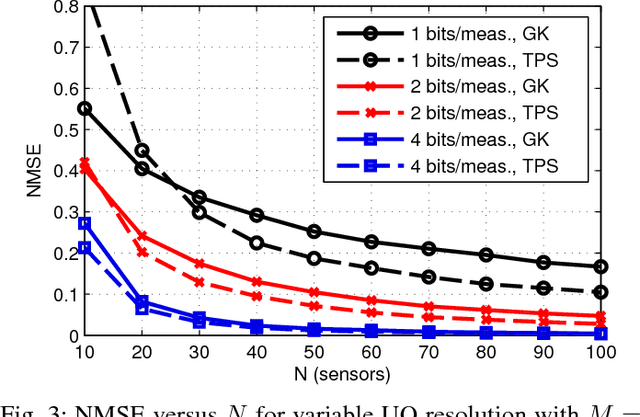
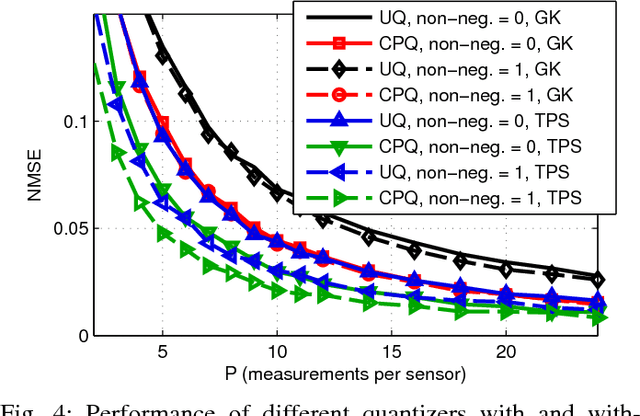
Abstract:Power spectral density (PSD) maps providing the distribution of RF power across space and frequency are constructed using power measurements collected by a network of low-cost sensors. By introducing linear compression and quantization to a small number of bits, sensor measurements can be communicated to the fusion center with minimal bandwidth requirements. Strengths of data- and model-driven approaches are combined to develop estimators capable of incorporating multiple forms of spectral and propagation prior information while fitting the rapid variations of shadow fading across space. To this end, novel nonparametric and semiparametric formulations are investigated. It is shown that PSD maps can be obtained using support vector machine-type solvers. In addition to batch approaches, an online algorithm attuned to real-time operation is developed. Numerical tests assess the performance of the novel algorithms.
Backhaul-Constrained Multi-Cell Cooperation Leveraging Sparsity and Spectral Clustering
Oct 14, 2015
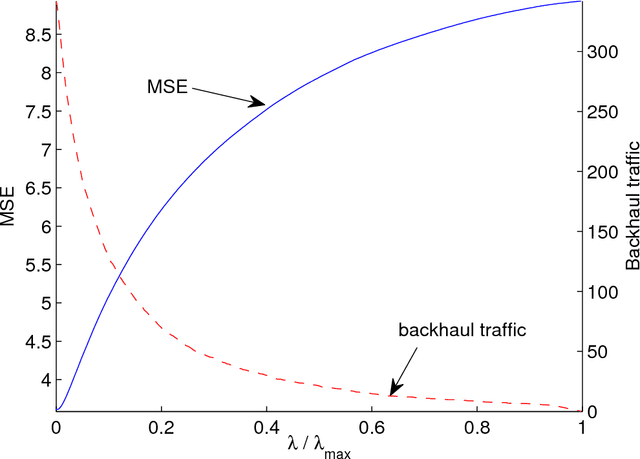


Abstract:Multi-cell cooperative processing with limited backhaul traffic is studied for cellular uplinks. Aiming at reduced backhaul overhead, a sparsity-regularized multi-cell receive-filter design problem is formulated. Both unstructured distributed cooperation as well as clustered cooperation, in which base station groups are formed for tight cooperation, are considered. Dynamic clustered cooperation, where the sparse equalizer and the cooperation clusters are jointly determined, is solved via alternating minimization based on spectral clustering and group-sparse regression. Furthermore, decentralized implementations of both unstructured and clustered cooperation schemes are developed for scalability, robustness and computational efficiency. Extensive numerical tests verify the efficacy of the proposed methods.
 Add to Chrome
Add to Chrome Add to Firefox
Add to Firefox Add to Edge
Add to Edge